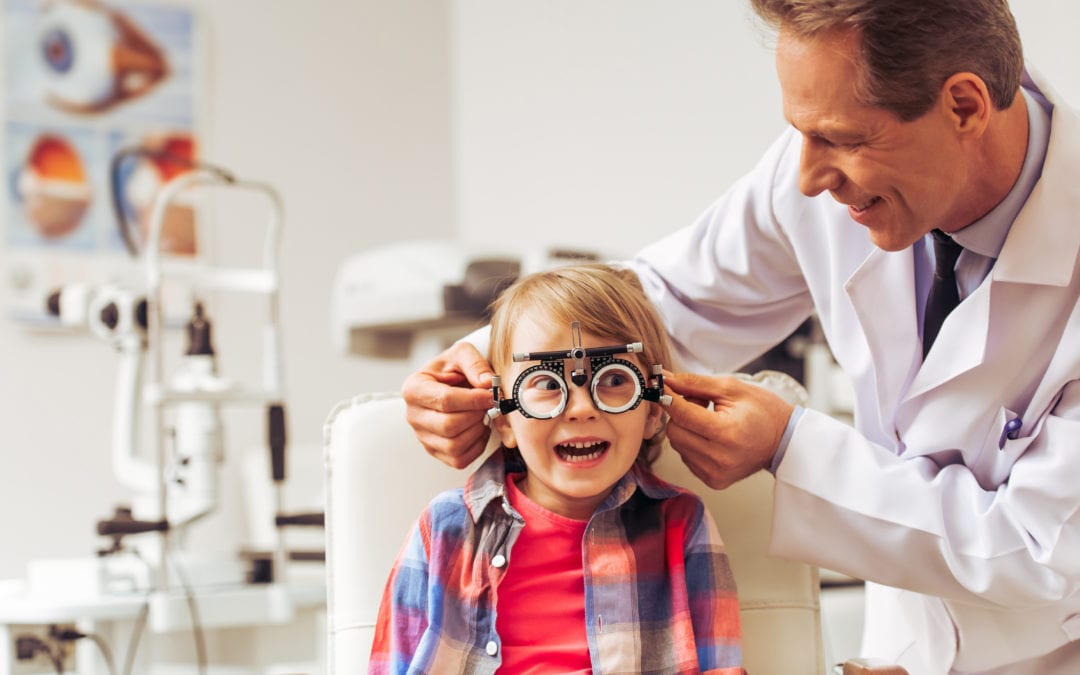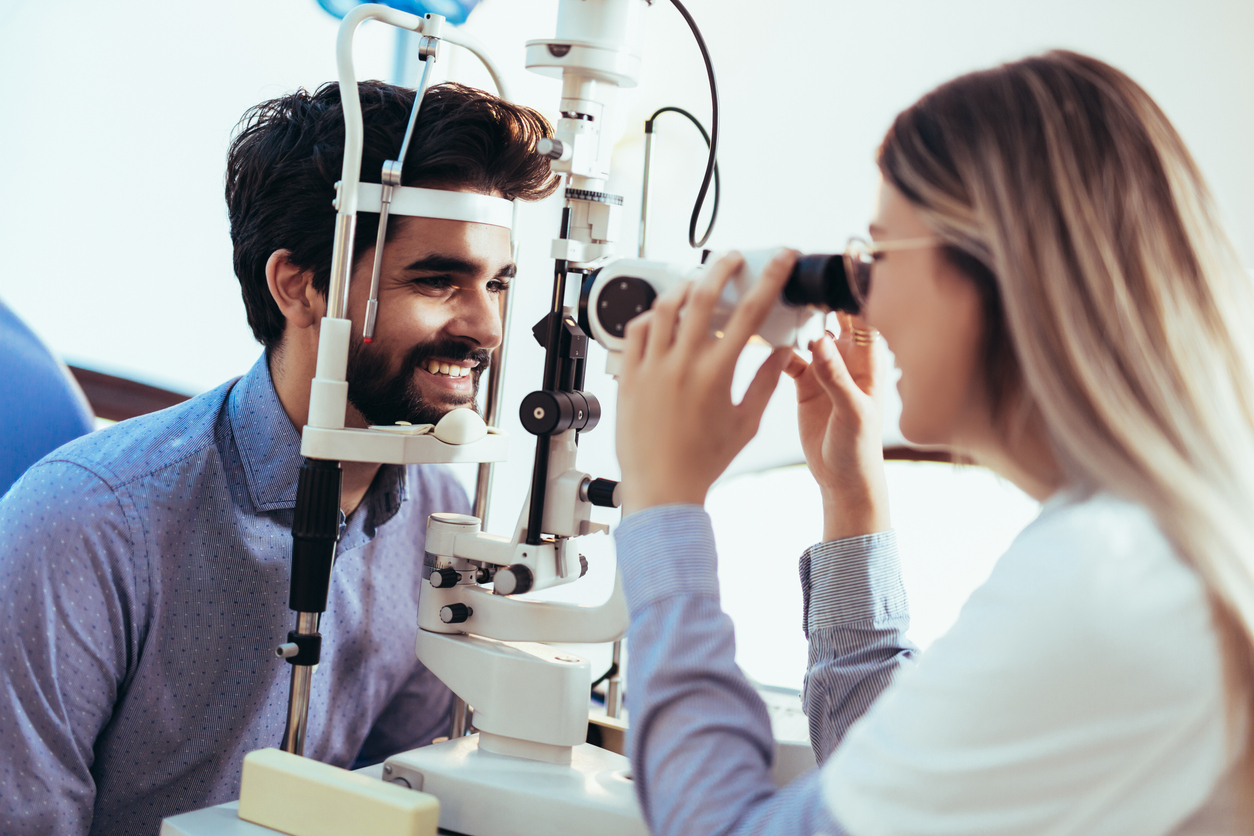The Comprehensive Eye Exam: What to Expect Throughout Your Visit to the Eye Physician
A visit to the eye physician for an extensive eye examination is greater than a routine check-up; it is a critical action in safeguarding your visual health. From the preliminary conversation of your clinical background to the precision of the aesthetic skill test, each part of the examination serves a particular purpose. But what precisely happens during the eye wellness evaluation, and just how does it influence the prescription procedure? Understanding these aspects is necessary for those that want to maintain ideal vision. As we check out each component, the value of follow-up suggestions will also come to be clear.
First Appointment
The preliminary consultation during an eye exam acts as a vital foundation for comprehending a client's aesthetic health demands. This stage sets the tone for the entire evaluation process, allowing the eye doctor to collect necessary details regarding the patient's medical history, lifestyle, and certain vision problems. By carefully assessing any type of pre-existing conditions, medicines, or previous surgical procedures, the eye treatment specialist can tailor the assessment to resolve individual needs effectively.

Furthermore, the preliminary appointment is an opportunity for patients to articulate any issues or questions, fostering a collective connection with their doctor. This communication not just makes sure that the individual feels informed and comfortable however also equips them to take part actively in their eye wellness management. Jointly, these conversations allow the optometrist to devise a tailored exam strategy, guaranteeing optimal treatment and exact diagnosis.
Visual Skill Test
Beginning the core parts of an eye evaluation, the aesthetic acuity examination is developed to analyze the intensity and clarity of an individual's vision. This vital evaluation helps identify just how well a person can determine letters or symbols at a standardized range, usually making use of a Snellen graph (Opticore Optometry). The chart makes up rows of letters that reduce in size from leading to base, with the client positioned at a customary range of 20 feet
Throughout the examination, the patient is asked to cover one eye and check out out loud the tiniest line of letters they can see clearly. This process is repeated for the various other eye. The results are videotaped as a fraction, with 20/20 vision indicating typical aesthetic acuity-- where the client can see at 20 feet what a person with typical vision can see at that distance.
The aesthetic acuity test also determines possible refractive mistakes such as nearsightedness, hyperopia, or astigmatism, which may demand corrective lenses. By establishing a baseline of visual efficiency, the examination is a vital analysis device that aids the eye treatment expert in establishing a proper therapy plan tailored to the patient's unique visual needs.
Eye Health And Wellness Evaluation
Complying with the aesthetic skill test, a detailed eye health and wellness evaluation is performed to make sure the general well-being of the eyes. This vital section of the eye test includes an extensive analysis of both the external and interior frameworks of the eye.
Following, focus changes to the internal structures. Through using ophthalmoscopy or fundus photography, the retina, optic nerve, and blood vessels are carefully evaluated. This step is crucial for recognizing problems such as retinal detachment, glaucoma, or diabetic retinopathy. In most cases, student dilation is performed to enhance exposure of the inner eye structures, although this might cause momentary light sensitivity for the person.
Furthermore, intraocular pressure is measured to screen for glaucoma danger. This is usually done using tonometry, which can find advice raised stress degrees that might suggest prospective damages to the optic nerve. Jointly, these assessments develop a detailed evaluation to maintain eye health.
Refraction and Prescription
Exactly how does one make sure optimum vision? A vital action depends on the procedure of refraction and getting a precise prescription. Refraction is an innovative treatment performed by eye treatment experts to establish the precise lens power needed to correct refractive mistakes such as myopia, astigmatism, hyperopia, and presbyopia. The goal of this treatment is to analyze how light bends as it travels through the eye, allowing the specialist to determine whether restorative lenses are necessary for improved aesthetic acuity.
During the refraction procedure, the client is asked to check out a phoropter, a tool recommended you read which contains numerous lenses. The professional will systematically transform these lenses and ask the client to contrast clearness in between choices till the finest possible vision is attained. This treatment is crucial in crafting an exact prescription that specifies the proper lens power for eyeglasses or call lenses.
The prescription stemmed from this treatment not just optimizes vision yet also functions as a structure for selecting suitable restorative glasses. It is vital to ensure that prescriptions are frequently upgraded, as changes in vision can happen with time, emphasizing the importance of regular eye evaluations. This thorough focus to detail aids keep clear, comfy vision in every day life.
Follow-Up Referrals

During a follow-up check out, the eye physician will carry out a series of examinations to review aesthetic acuity and look for any type of changes in vision that might necessitate an upgrade to the prescription. Furthermore, the follow-up offers an opportunity to review any type of pain or problems experienced with current glasses. Changes can be made to guarantee convenience and efficacy, whether via lens adjustment or frame modifications.
For clients with ongoing problems such as glaucoma, diabetes-related eye issues, or macular deterioration, even more regular follow-ups may be needed. These appointments are crucial for managing and possibly slowing the development of eye disease. Following these suggestions can substantially add to maintaining aesthetic health and protecting against long-lasting problems.
Verdict
The extensive eye test is a necessary procedure for keeping aesthetic health and wellness, incorporating a detailed assessment of clinical background and vision problems. Trick components consist of the aesthetic acuity test, which examines vision clearness, and the visit homepage eye health and wellness evaluation, which checks out the total problem of the eyes.
A browse through to the eye medical professional for a thorough eye exam is even more than a regular examination; it is a critical step in safeguarding your visual wellness.Kicking off the core parts of an eye examination, the aesthetic acuity test is designed to assess the sharpness and quality of a person's vision.Adhering to the visual skill examination, a detailed eye health and wellness assessment is performed to ensure the overall health of the eyes. These brows through enable the eye care expert to monitor adjustments in vision, update prescriptions, and assess the general health of the eyes. Trick elements include the aesthetic skill test, which evaluates sight clarity, and the eye wellness analysis, which takes a look at the general problem of the eyes.